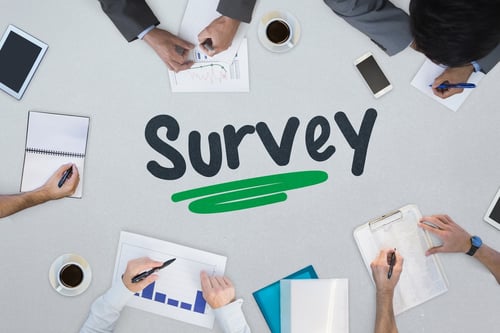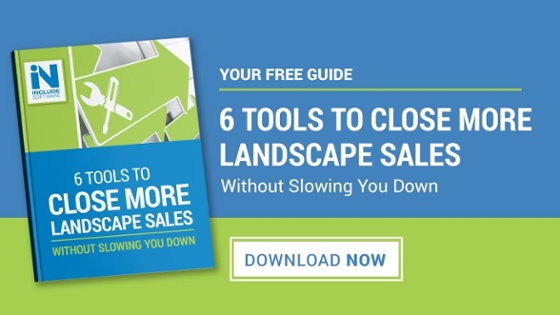 What if you had a way that you could get inside of your customers’ heads and know exactly what they like—and dislike—about your landscaping business? It would give you the insight you require to make smart decisions and it would help you keep your customers’ best interests at heart.
What if you had a way that you could get inside of your customers’ heads and know exactly what they like—and dislike—about your landscaping business? It would give you the insight you require to make smart decisions and it would help you keep your customers’ best interests at heart.
The truth is, a tool like this already exists but it is grossly underutilized by many in the landscape industry—that being, customer surveys. Surveying your customers is an opportunity to gain meaningful insights from your landscaping customers that can drive actionable steps to improve your growth, retention, and profit.
Of course, you want to be sure that you do it the right way. Surveys can be annoying and depending on how you go about it, getting people to fill them out can be a challenge.
If you’re wondering how to survey customers and how often, what tools to use, or what to do with the information you obtain, then we’ve got you covered. We understand that getting the surveying process rolling can feel daunting but it’s something that we’ve done ourselves and we’ve learned a lot. That’s why we wanted to share some of our best tips to help get you started.
How to Survey Your Customers
The simplest way to begin surveying internal customers is to find out your Net Promoter Score® (or NPS). This is something that you may already be familiar with. Your NPS is calculated by asking what’s called “The Ultimate Question,” which is how likely is it that you would recommend this company to a friend or colleague. Survey participants will then respond on a scale from 0 to 10 with 0 being “not at all likely” and 10 being “extremely likely.”
Customers that give you a 6 or below are considered “Detractors.” Those with a score of 7 or 8 are called “Passives.” And those who provide a 9 or 10 are “Promoters.” To calculate your NPS, subtract the percentage of Detractors from the percentage of Promoters. This will give you some real insight into your customer loyalty spectrum and give you a good sense of where improvements are needed.
Of course, the NPS alone will only tell you how you are performing and provides nothing regarding the “why.” This is where additional customer survey questions are so important.
When we survey our customers for NPS data, we ask anyone that is not a “Promoter” why they are not. It can also be valuable to ask your Promoters why they support you in order to get some valuable information on what you’re doing well. In other words, we view NPS as an opportunity to engage in conversation.
Methods of Surveying Your Customers
 In terms of what method to use for surveying, it can be electronic with email campaigns or online tools. There are many survey services out there that will help you conduct a survey. These can be helpful as they may even offer “filtering tools” which would allow you to filter out certain responses or respondents—including filtering out people who have already responded in the past (so that duplicate responses don’t skew your data).
In terms of what method to use for surveying, it can be electronic with email campaigns or online tools. There are many survey services out there that will help you conduct a survey. These can be helpful as they may even offer “filtering tools” which would allow you to filter out certain responses or respondents—including filtering out people who have already responded in the past (so that duplicate responses don’t skew your data).
But we’ve also found that some businesses have been able to perform surveys over the phone or outsource the task. Sometimes a very quick phone survey is more likely to actually be accepted by the customer.
No matter which method you choose, it’s essential to keep it simple and quick. As you know, your customers are busy, and they may view a survey as a hassle. The shorter and easier you make the survey, the more likely they are to follow through with taking it.
You can also encourage customers to actually take your survey by offering incentives. The fact of the matter is, people might not be bothered unless there’s something in it for them. Monetary incentives might include cash or a gift card. Non-monetary incentives might be some sort of company swag that you give out. Either way, a “reward” for completing the survey might encourage folks to follow through.
Of course, there can be a downside to offering incentives in the form of attracting the wrong types of responses. Survey respondents who are only in it for the reward might offer rushed or careless survey responses which could skew your results. In a lot of cases, respondents may be more likely to provide positive results if they were incentivized. Since you’re looking for honest, unbiased data, you just have to be careful about how your use of rewards may change that.
Generating the Best Customer Survey Questions
Beyond “The Ultimate Question,” delving deeper with a survey requires asking really good questions. Generally speaking, the more insightful questions will generate the most helpful data. But it still needs to be simple and quick, as previously mentioned.
One way to achieve this is to pose a question and provide some of the common choices that you suspect your customers might say. This makes it fast for them to pick an answer. Of course, you should always leave room for more comments. Those customer comments can be critical in deriving valuable data.
While there are many different directions you could go with your questions, Survey Monkey, an online survey development service company, shared some of the most commonly used questions which could be adapted to the service industry:
- What changes would most improve our XYZ service?
- What do you like most/least about our XYZ service?
- Overall, are you satisfied with your experience using our service, neither satisfied or dissatisfied with it, or dissatisfied with it?
- Which category indicates your age? (List out age groups)
- Are you male or female?
The final two questions will give you pertinent data on your customer base as well as what age groups and gender groups value most. It may differ greatly from group to group, which is important to know and understand as you move forward making company decisions.
When Should I Survey Customers?
After you’ve put hard work into creating a survey with the best possible survey questions, you might be wondering when to send it. Survey Monkey analyzed data from 100,000 surveys to answer that very question.
What they found was that the response rates for surveys were highest on those sent out on Mondays and lowest on those sent out on Fridays. As your customers look to head into the weekend, your survey could be forgotten. By the time the new week rolls around it may be buried in email and far from the forefront of your customers’ minds. For that reason, it might be ideal to send your surveys early in the week. This is a theory you can always test out on your own and see when your customers respond the most.
How Often Should I Survey Customers?
The other question that you might be asking is how frequently you should send surveys. The last thing that you want to do is create “survey fatigue,” which happens when companies survey customers so often that they get tired of responding.
There is a lot of mixed information out there regarding the frequency of surveying but what we’ve found (anecdotally) is that a lot of businesses say they have success with annual or biannual surveys. Others have said quarterly. Anything more than that is probably too time-consuming for you and your customers.
What to Do with the Data
 Once you’ve finished surveying your customers, you’re going to be left with a lot of data. In looking at a big picture of the data you collected you want to seek out “trends” rather than small nuances. Are there aspects of your company or its services that people love/hate, and why.
Once you’ve finished surveying your customers, you’re going to be left with a lot of data. In looking at a big picture of the data you collected you want to seek out “trends” rather than small nuances. Are there aspects of your company or its services that people love/hate, and why.
It’s important that you share the results from the survey with your team members and start to introduce plans of action in response to what you’ve learned.
While your goal in surveying is to keep up with what your customers want, you should still plan to collect a few baseline surveys before making a really big company change. If you’ve learned small things about your company that are simple and easy to change and won’t have a major impact on the way of doing business, certainly make those right away.
For instance, if several survey respondents mentioned that they really hate it when you hang invoices on the front door and they would prefer it to be mailed or emailed, that’s a simple change you could start right away.
However, don’t add or eliminate an entire service or department based on a single survey. You should, however, start discussing with your team how you might be able to make changes that would improve your existing services.
Keeping Customers Happy
There’s no question that surveying your customers helps you keep your finger on the pulse of what your customers want and how well you’re doing in meeting their needs. That’s critical information when it comes to maintaining a successful business.
At Include Software, periodic surveying has helped us to stay in closer touch with our clients and what they need. Truly knowing your clients is a critical factor for any business that is providing a service. By taking the time to perform surveys, your customers will appreciate that you care about their feedback and are looking to align your company with their needs.
We love it that so many landscaping companies want to keep the pulse of what their customers want and need. Running your business more efficiently with landscape business software is another way to keep customers happy. If you’re curious, let’s explore and see what Asset can do for you.
Image Sources: T. Lake Environmental Design



